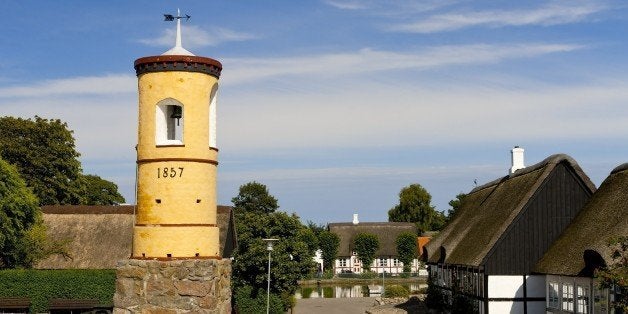
Denmark and the island of Samso is the "Go To" destination for the world to learn about the successful transition to the low-carbon economy. In 1995, at COP 3 in Kyoto, Denmark, Sweden and Germany agreed to cut CO2 emissions at that time by 21%. This commitment was followed in Denmark by a competition to become the first Danish 100% renewable-energy community. The island of Samso won this competition and took on the challenge of transitioning from a traditional energy supply, based primarily on fossil fuels, to a society based on renewable energy.
Samso submitted a 10-year, detailed, year-by-year master plan delineating what technologies and fuels would be used to do the job!
Samso is a small community of 4,000 people. It is an independent municipality and, in many ways, a good example of a rural Danish community. People live normal lives and primarily make a living from farming and tourism. Culture and art is also an important economic asset. Quite a few musicians, painters and writers find success on Samso.
To take on a challenge like the energy project is not an easy one! Most rural communities are quite conservative when it comes to change. We know what we have and it is good! New developments and technologies need time, many meetings and lots of coffee! It is important to feel comfortable and to feel engaged and involved in a project. It was one of the first, and perhaps the most important, lesson learned by the project developers. Keep the project open and take as much time as is needed to make people feel they own the project. If everything is concluded and described in detail -- presented as a fait accompli -- people feel left out and not part of the process.
The people of Samso are proud of the island! The nature is beautiful and the local culture is good. The islanders want to keep it like it is or make it even better. They like improvements to be in a good balance with the existing qualities. Erecting wind turbines and changing infrastructure might harm the general understanding of what makes the island a nice place to live.
So how did we do it?
As a government requirement for winning the project, the island had to produce a master plan -- a detailed plan describing how the transition would take place based on a study of resource consumption and a study on technologies that could harvest existing local fuels like wind, solar and biomass (from farms and forest residues).
This master plan also had an imbedded time line. The project needed to be completed within 10 years. So, for the benefit of the local community, it was necessary to break up the 10-year plan into a step-by-step structure so that the farmers, the trade and business people could all see what was there for them to do and the citizens could evaluate what was beneficial for them.
"What's in it for me" is a good starting point for most people. And even better, if you identify what's in it for me, one can also change the so-called NIMBY (not in my backyard) to be YIMBY (Yes-in my backyard) because you are now involved, either as owner, shareholder or consumer with an interest in green energy. It is so much nicer to look at your "own" wind turbine! For some reason it looks better! It even sounds better when you own a share of it. It is pure psychology and easy to understand. If the turbine belongs to your neighbor and you have to look at it without any stake in it, it turns into this terrible, noisy, bird-killing, ugly installation in the landscape!
This has lead to a 100% self-supplied renewable-energy community. The CO2 emissions are today negative! Most space heating is supplied from district heating. Boilers burn straw and distribute hot water to heat houses -- and 75% of all houses are connected. The rest use heat pumps, individual biomass boilers and/or solar thermal. Electricity comes from 11 MW of wind turbines producing 100% of the average yearly consumption -- 23MW offshore wind power compensates for the transport sector's energy consumption. Samso has the highest number of electric vehicles per capita in Denmark! A new ferry uses Liquid Natural Gas, but it will soon be upgraded and fueled by methane from a local biogas digester.
We (the Non profit energy organization) acted as the voice of the people. We called numerous meetings and participated in local talks about future possibilities -- and soon we saw that people "bought into" this new concept of potential jobs, green energy for heating, electricity from wind power or just the social dimension of meeting with the community. You can say we recreated community by addressing the interest of the commons (being wind, solar and biomass) and leaving the ownership to the community.
We later created a new word for this! It is called Commonity = Common+ community. This is also a book title by Tor Norretranders and Soren Hermansen. The book debates the Samso project and, at the same time, describes the modern commons.
This post is part of a "Nordic Solutions" series produced by The Huffington Post, in conjunction with the U.N.'s 21st Conference of the Parties (COP21) in Paris (Nov. 30-Dec. 11), aka the climate-change conference. The series will put a spotlight on climate solutions from the five Nordic countries, and is part of our What's Working editorial initiative. To view the entire series, visit here.